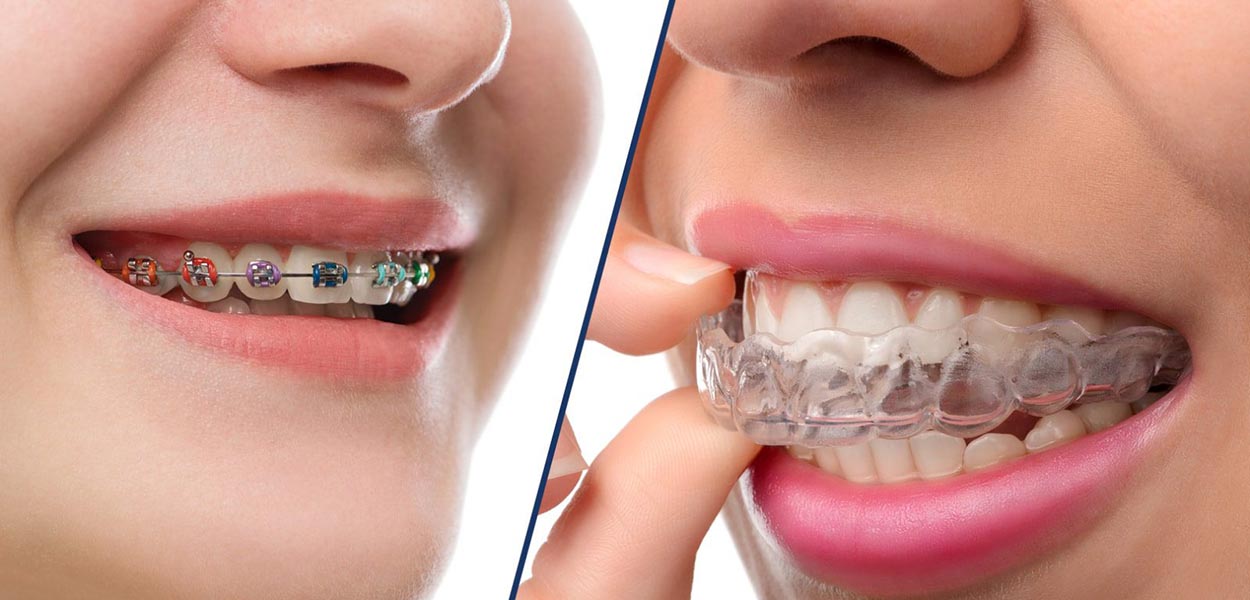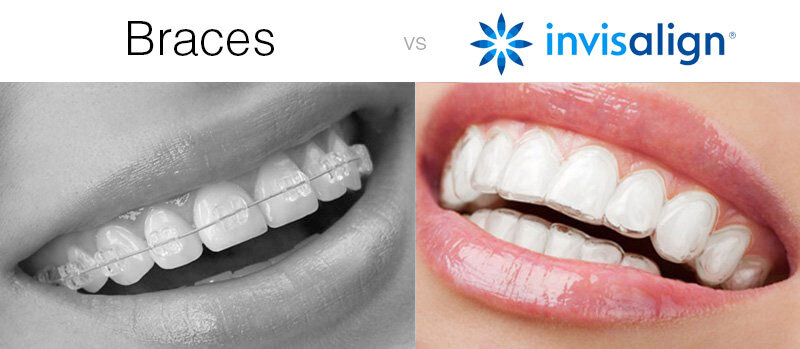Success Stories: How Invisalign Changed Lives and Improved Confidence
Success Stories: How Invisalign Changed Lives and Improved Confidence
Blog Article
Invisalign vs. Traditional Braces: Which Choice Is Right for You?
When taking into consideration orthodontic therapy, the choice between Invisalign and conventional braces provides a number of crucial variables that warrant mindful evaluation. Invisalign provides a discreet option with removable aligners, while conventional braces give a more noticeable yet effective solution for severe imbalance. Each alternative incorporates distinctive advantages and downsides associated with aesthetics, comfort, therapy period, and price. Recognizing these subtleties is vital for making a notified decision that aligns with your personal choices and way of living. The concern stays: which choice will best meet your orthodontic demands and assumptions?
Review of Treatment Options

In comparison, traditional braces are composed of steel brackets and wires that are bound to the teeth. This approach uses continuous pressure gradually to attain alignment. While efficient for complicated orthodontic concerns, traditional braces need routine brows through for adjustments and can position difficulties in keeping dental health as a result of the trouble of cleaning around wires and brackets.
Both choices have their qualities, and the selection frequently hinges on particular dental conditions, way of life preferences, and individual conformity. Eventually, seeking advice from an orthodontic specialist is critical for determining one of the most appropriate treatment plan tailored to individual needs. Comprehending the subtleties of each alternative can substantially influence the general success of orthodontic therapy.
Aesthetic Considerations
A significant factor influencing the selection in between Invisalign and standard braces is the aesthetic appeal each therapy supplies. Invisalign aligners are crafted from clear plastic, making them essentially undetectable when used. This discreet look is especially attracting young adults and adults who might really feel uncomfortable about their orthodontic therapy. The capability to maintain an all-natural smile throughout the positioning process can significantly boost the client's confidence in specialist and social setups.
In comparison, conventional dental braces include steel brackets and cords, which can be much more recognizable. While improvements in orthodontic technology have brought about the advancement of smaller sized brackets and tinted elastics, traditional braces still keep a more noticeable account. For some individuals, the presence of braces may deter them from looking for required treatment.
Eventually, the selection in between Invisalign and conventional dental braces may hinge on personal choices pertaining to aesthetic appeals. People who focus on discretion often favor Invisalign, while those who are much less worried about visibility may go with standard dental braces. Recognizing the visual ramifications of each alternative is vital for making an educated decision that lines up with one's way of life and choices.
Convenience and Convenience

In regards to benefit, Invisalign aligners are removable, enabling individuals to enjoy their preferred foods without restriction and keep optimum oral hygiene. Cleaning and flossing are simplified, as the aligners can be taken out throughout these routines, whereas standard dental braces you could look here require careful steering around braces and cables.
In addition, Invisalign's modern system permits less orthodontic visits. Clients generally obtain several collections of aligners at the same time, which can streamline the therapy process and minimize time invested in the orthodontist's chair. On the other hand, standard braces demand routine modifications, making them less hassle-free for those with active routines. Invisalign. In general, the comfort and ease of Invisalign make it an enticing option for lots of people looking for orthodontic treatment.
Therapy Period and Performance
While both Invisalign and typical dental braces are effective in remedying dental misalignments, the duration of therapy can vary substantially between both choices. Commonly, Invisalign therapy can take anywhere from 12 to 18 months, depending on the intricacy of the instance. The clear aligners work by progressively moving teeth into their desired positions, and normal follow-ups with an orthodontist assistance ensure development remains on the right track.
On the other hand, conventional braces often need a longer commitment, typically varying from 18 months to three years. This is due to their fixed nature and the usage of cords and braces, which can be more effective for severe imbalances and complex cases (Invisalign). The therapy performance of traditional dental braces is well-documented, as they permit precise adjustments and higher control over tooth movement
Inevitably, the choice in between Invisalign and conventional dental braces might hinge on both the anticipated therapy duration and the particular oral look at this web-site concerns handy. Consulting with an orthodontist is essential, as they can provide tailored referrals based upon specific needs, making sure the selected technique straightens with desired timeframes and outcomes.
Cost Contrast and Insurance Options
Expense plays a significant role in the decision-making process for people taking into consideration orthodontic treatment, whether selecting Invisalign or conventional dental braces. Usually, the price of Invisalign varieties from $3,000 to $8,000, while standard dental braces normally cost between $2,000 and $6,000. Variables affecting these costs include the intricacy of the instance, the period of treatment, and geographical place.
Insurance protection can considerably affect out-of-pocket expenditures. Many dental insurance policy plans supply partial insurance coverage for orthodontic treatments, however the specifics can differ commonly. It is critical for clients to evaluate their insurance plan to figure out the degree of protection for either option. Generally, standard braces may be extra regularly covered by insurance coverage strategies compared to Invisalign, which some insurance providers categorize as a cosmetic treatment.
Furthermore, numerous orthodontic methods supply versatile payment strategies, making both therapy options extra available. People must ask about prospective funding alternatives and price cuts for ahead of time settlements. Assessing the overall price, consisting of insurance coverage benefits and layaway plan, is vital for making an educated choice that lines up with both aesthetic preferences and budget plan considerations.

Verdict
In recap, the choice in between Invisalign and traditional dental braces depends upon several more tips here variables, including aesthetic preferences, convenience, treatment period, and expense. Invisalign provides a discreet, removable option that assists in oral health and nutritional flexibility, while typical braces may be better for intricate oral concerns and commonly come at a lower cost factor. Inevitably, examination with an orthodontist is important to analyze specific situations and determine one of the most ideal treatment alternative for achieving ideal oral placement.
When thinking about orthodontic therapy, the selection in between Invisalign and typical braces offers numerous crucial factors that merit careful evaluation.Comparing Invisalign and traditional dental braces reveals distinct therapy options for orthodontic modification.While both Invisalign and conventional dental braces are efficient in remedying dental misalignments, the period of therapy can differ dramatically between the two alternatives.Price plays a considerable role in the decision-making process for people taking into consideration orthodontic treatment, whether choosing for Invisalign or conventional braces.In summary, the choice in between Invisalign and standard braces hinges on multiple aspects, consisting of visual preferences, convenience, treatment duration, and cost.
Report this page